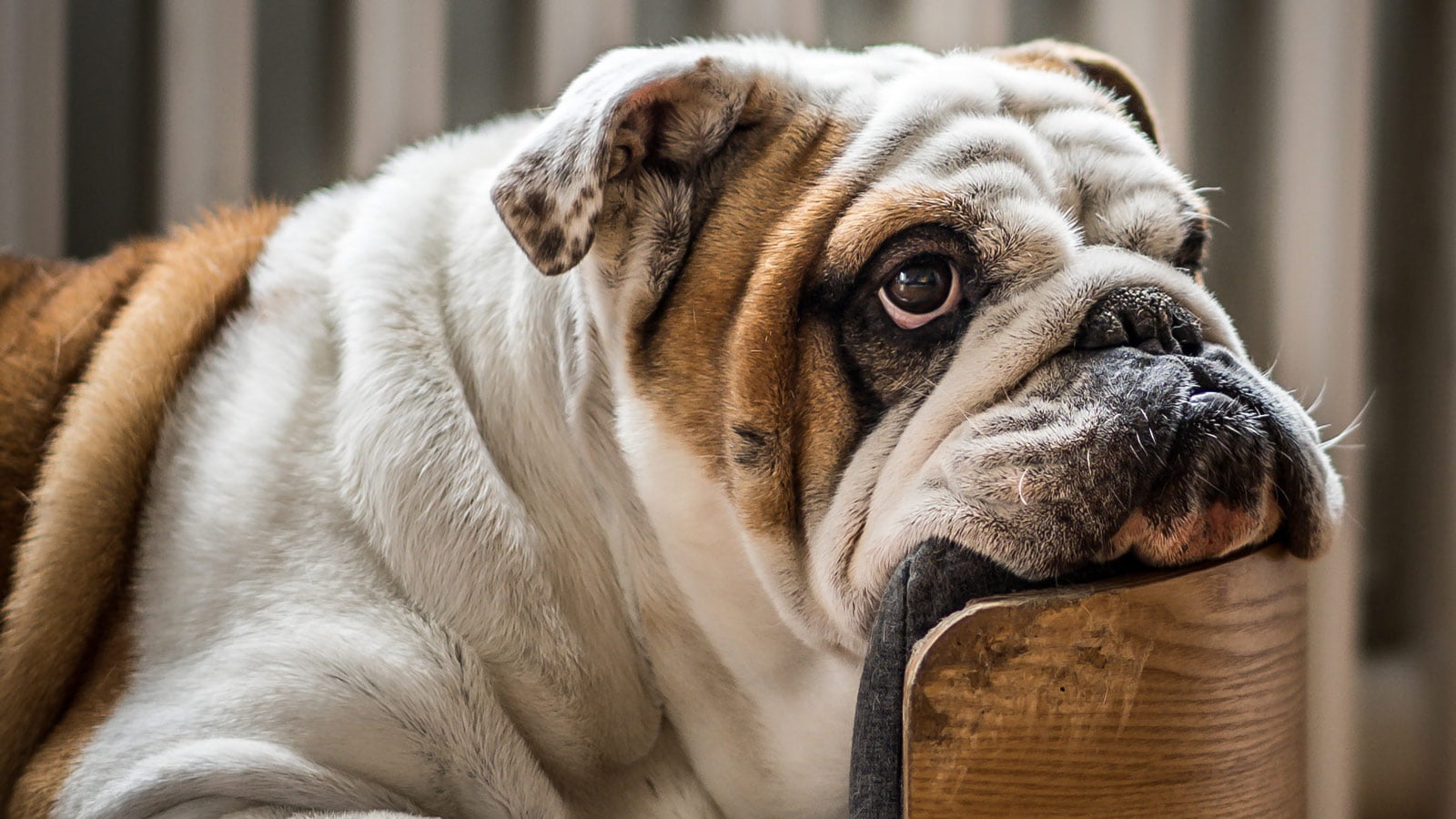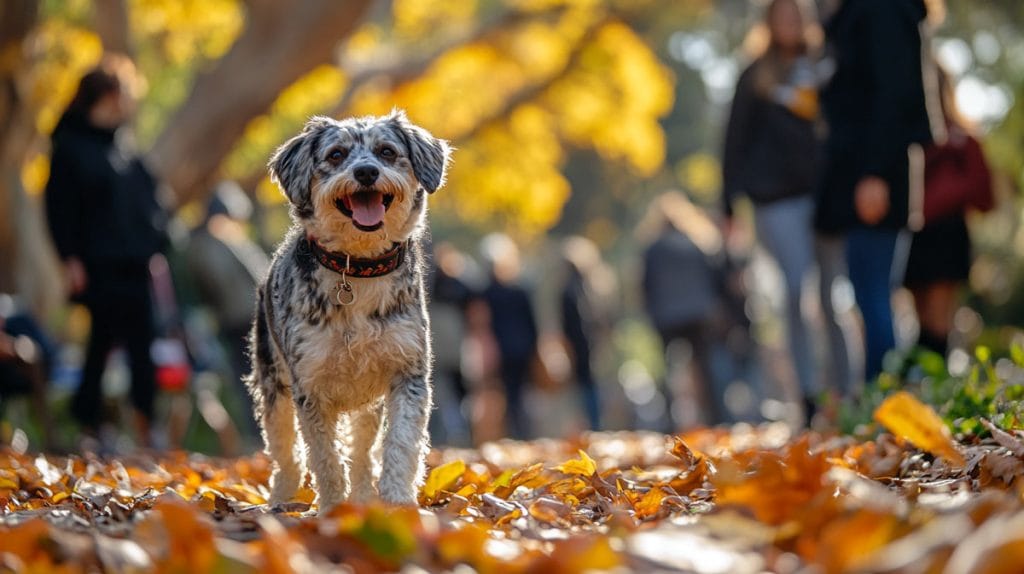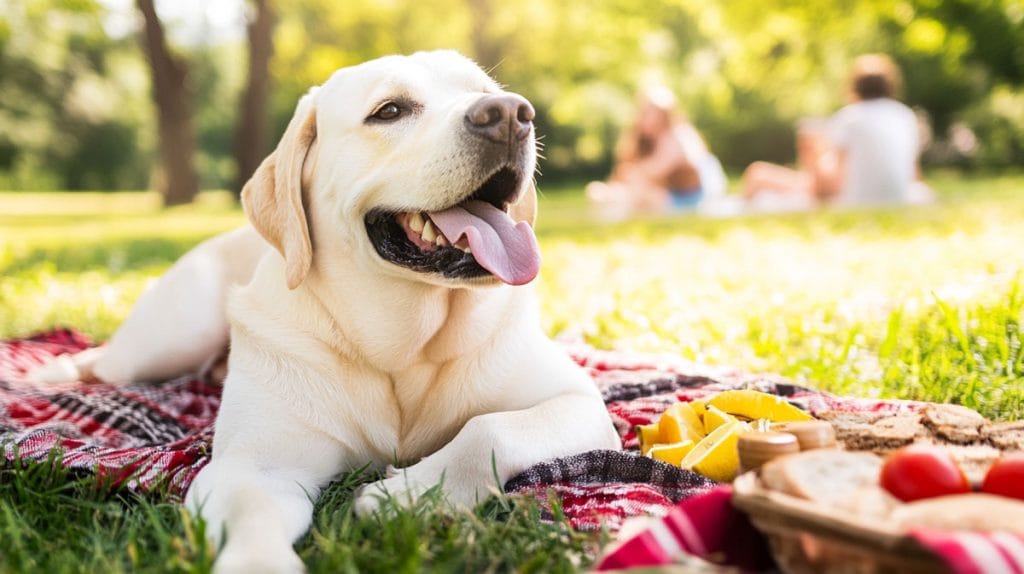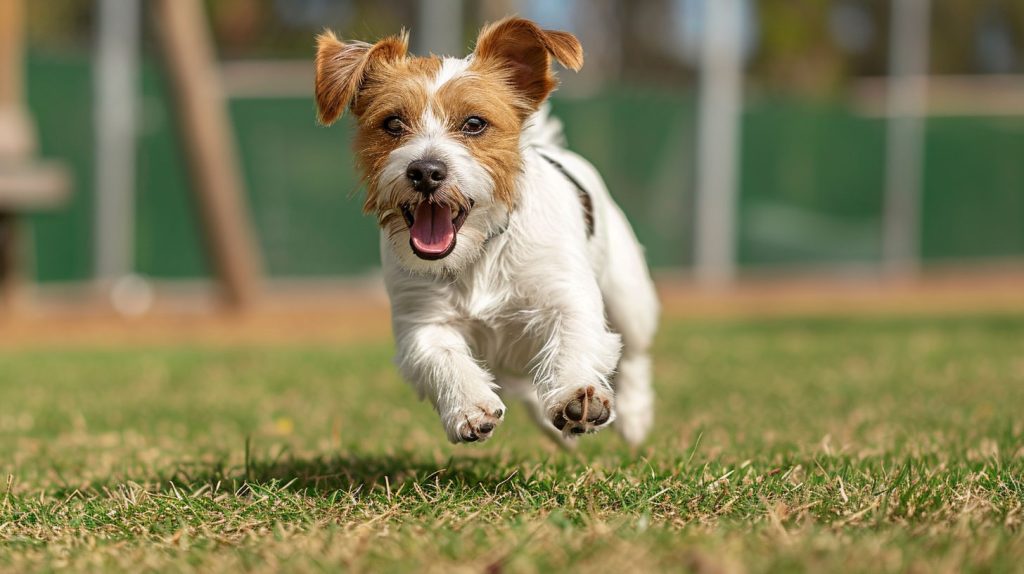If you’re anything like me, your four-legged friend isn’t just a pet; they’re part of the family. And just like with any family member, their health and well-being are top priorities. That’s why a question we often find ourselves asking is, “Is my dog overweight?”. Now, before you dismiss this as another fad concern, hear me out. This is a crucial question for those of us who love to spoil our pups, whether it’s with an extra treat or two (who can resist those eyes?) or a bit of leniency when it comes to portion sizes.
But here’s the rub: while we all love to see our dogs happy and full, their health could be at stake. Overweight dogs, much like humans, can face a host of health issues, from joint pain to heart problems. And let’s be honest, we all want our furry companions to be with us, healthy and happy, for as long as possible.
So, how do you tell if your pooch might be carrying a few extra pounds? And more importantly, what can you do about it if they are? Don’t worry, I’m not here to preach or make you feel guilty. We’re all doing our best as pet parents. Instead, let’s take a dive into some friendly, honest, and practical advice on managing your dog’s weight. Think of this as a guide to keep your dog healthy, happy, and ready for all the adventures you love to share, from hikes in the great outdoors to a relaxing day at your favourite dog-friendly café.
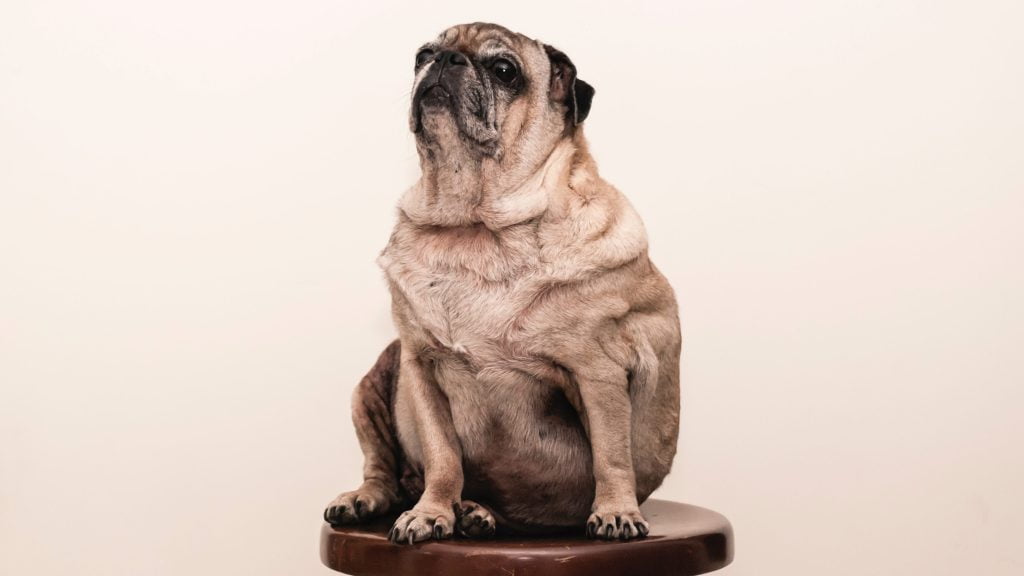
Ideal Rib Visibility in Dogs: What to Look For
Start by placing your hands on your dog’s ribcage. Your thumbs should rest on their back, with fingers spread downward. It’s a simple touch-test: you should feel the ribs quite easily. This is a vital indicator of a healthy weight in dogs. If you find yourself pressing significantly to feel the ribs, it could be a sign of excess weight.
Breed and Coat Considerations in Dog Weight Check
Keep in mind that different breeds have different body compositions. A greyhound, for example, naturally has a more visible ribcage than a bulldog. Also, dogs with thick coats may require a more thorough feel to accurately assess their ribcage.
Know Your Dog’s Ideal Body Shape
When it comes to assessing if your dog might be overweight, the visual examination is key. It’s about getting a clear picture of their overall body shape and understanding what you’re looking for. This not only helps in identifying any weight issues but also in maintaining your dog’s ideal weight throughout their life.
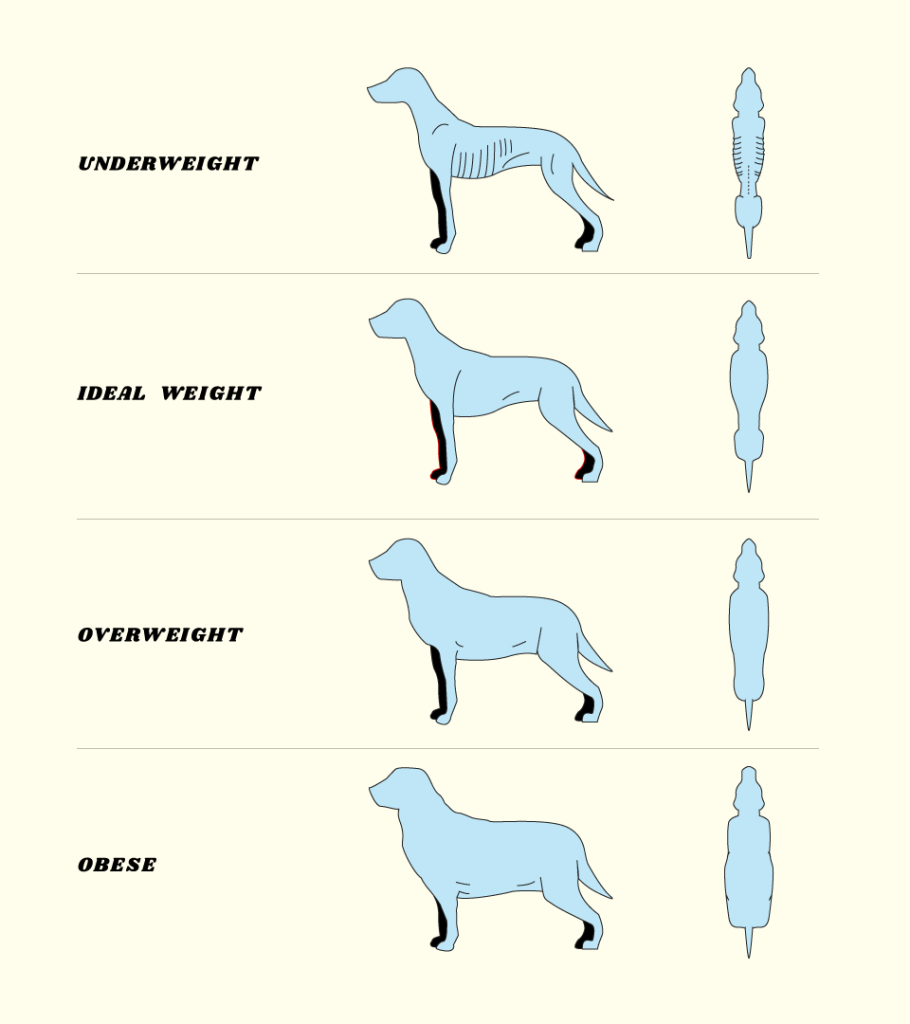
Spotting the Waist: A Visual Guide
One of the most telling signs of a healthy weight in dogs is the presence of a visible waist. When viewing your dog from above, look for a noticeable narrowing just behind the ribs. This is their waist. In dogs who are at an ideal weight, this area should be distinctly slimmer than the chest and hips. If your dog’s waist seems non-existent or their body looks more like a rectangle, it could be a hint that they’re carrying extra weight.
The Side View: Looking for the Abdominal Tuck
Another visual indicator is the abdominal tuck, which is best seen from a side view. Healthy dogs typically show an upward slope of the tummy, starting from the ribcage to the hind legs. This slope, known as the abdominal tuck, should be evident. If your dog’s belly hangs low and the tuck is missing, it’s a sign that they might be overweight. In overweight dogs, this area can appear more straight or saggy, indicating excess weight.
Breed-Specific Body Shapes
It’s important to remember that ideal body shapes can vary significantly across breeds. For example, greyhounds naturally have a more pronounced waist and tuck, while breeds like bulldogs or pugs may have less distinct body contours due to their build. Therefore, familiarising yourself with the specific body shape standards for your dog’s breed can be incredibly helpful.
Understanding Your Dog’s Energy Levels and Mobility
When pondering the question, “Is my dog overweight?”, it’s crucial to observe their energy levels and mobility. Often, what seems like a penchant for lazy afternoons could be a sign your dog is carrying extra weight.
Early Signs of Decreased Energy Due to Weight Gain
Closely observing their energy levels and mobility can provide early clues. A common sign of weight gain in dogs is a noticeable decrease in energy. Perhaps your once lively companion now shows reluctance to engage in play or seems unusually tired after a short walk. This isn’t just about a dog becoming more sedate with age; it’s often directly linked to the extra weight they’re carrying. Identifying these subtle changes in behaviour and energy levels is crucial.
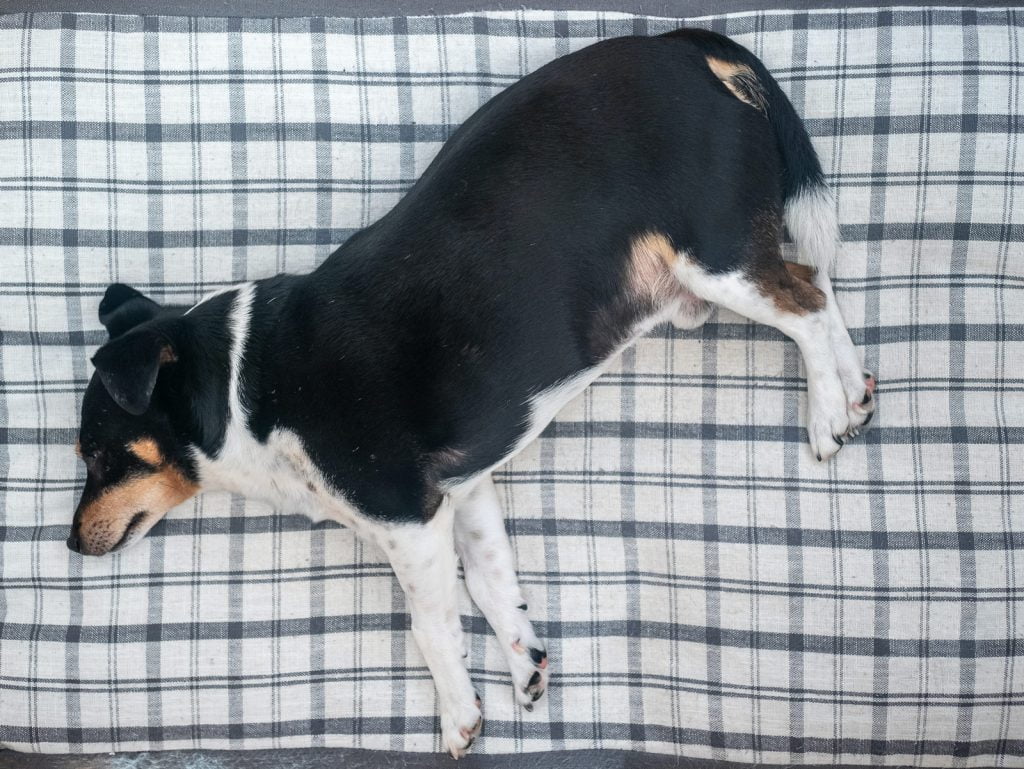
Mobility Challenges: A Key Indicator of an Overweight Dog
Another significant indicator to watch for is changes in your dog’s mobility. Weight gain can lead to decreased mobility, making it harder for your dog to move around with ease. You might notice that they’re slower to get up, seem to struggle with stairs, or are hesitant to jump into the car or onto furniture. These are not just signs of aging or laziness but can be direct consequences of the extra burden their joints and muscles are bearing due to being overweight.
Overweight Dog Breathing Patterns
Pay attention to your dog’s breathing during physical activity. If you have an overweight dog, you might notice heavier or more laboured breathing during what would normally be considered light exercise. This is because excess weight can put a strain on their respiratory system, making it harder for them to breathe when they’re active. This change in breathing pattern can be a clear signal that your dog’s weight is impacting their physical well-being.
The Action Plan for a Healthier Dog: Diet and Exercise Strategies
Your vet is your go-to for a tailored strategy to your dogs health. They can provide a more scientific assessment and tailor a plan for your dog’s specific needs. This isn’t just about diet; it’s a holistic approach to health, from exercise to potential underlying issues.
Balancing the Diet for Optimal Dog Health
When it comes to managing your dog’s weight, the diet is king. But it’s not just about reducing the amount of food; it’s about finding the right balance of nutrients. High-quality dog food, possibly prescribed by your vet, can make a world of difference. It’s about feeding them a diet that’s rich in the nutrients they need and appropriate for their age, breed, and activity level. Consider introducing healthy treats like carrots or apples instead of store-bought snacks, which can be high in calories.
Remember, a sudden change in diet can upset your dog’s stomach. Gradually introduce new food over a week, mixing it with the current food and increasing the proportion each day. And water, always ensure they have plenty of fresh water.
Tail-Wagging Workouts: Exercise for Your Canine Companion
Consistent, moderate exercise is key to managing your dog’s weight. It’s not about running a marathon with your furry friend; it’s about regular, enjoyable physical activities that keep them engaged and gradually improve their fitness. Consistent exercise will not only help in shedding those extra pounds but also improve their overall health and mood. A happy dog is an active dog, and by keeping them moving at a pace that’s comfortable for them, you’re ensuring a healthier, more joyful life together.
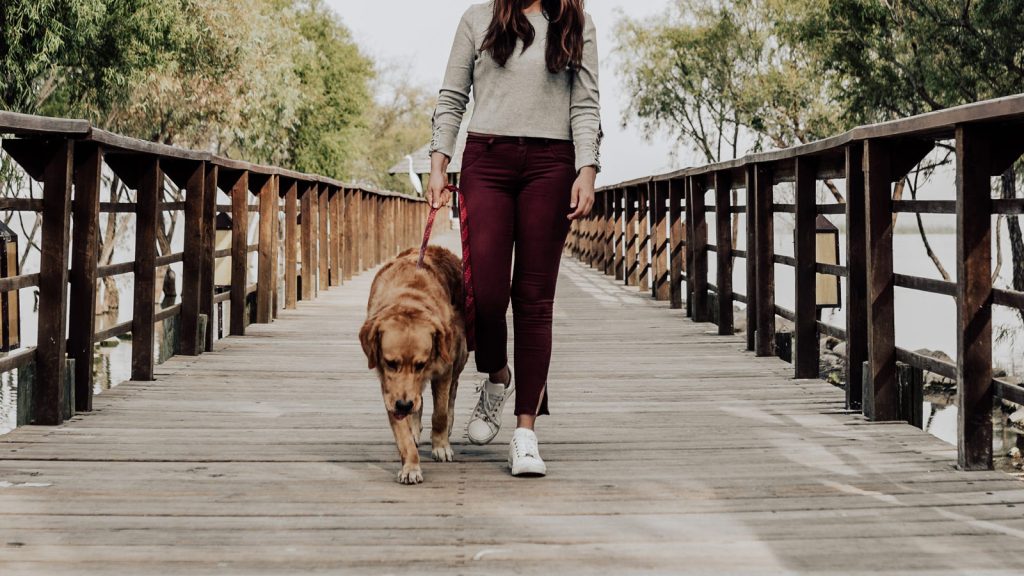
Start with manageable walks, gradually increasing the duration and intensity. Swimming is another fantastic low-impact exercise, especially for older dogs with joint issues. As they start to shed the extra weight, you can gradually increase the intensity, always monitoring their response to ensure they’re not being overworked.
Regular Health Checks: Keeping Tabs on Progress
Regular check-ins are crucial. Weigh your dog every couple of weeks to track progress. This isn’t just about numbers on a scale; it’s about celebrating the small victories and adjusting the plan if needed. Notice how they’re moving and behaving. Do they seem more active? Happier? These are signs that you’re on the right track.
Celebrating Every Success: The Joy in the Journey
Every step towards a healthier weight is a victory, not just for your dog, but for you as well. These moments are worth celebrating. Perhaps a little extra playtime in the park, or maybe a new toy. It reinforces positive behaviour and makes the journey enjoyable.
A Happy, Healthy Journey for You and Your Dog
Tackling the issue of an overweight dog is more than a temporary fix; it’s about a lifelong commitment to health and happiness. Frequent vet check-ups, a balanced diet, and an active lifestyle are key. Watching your dog regain energy and joy as they reach a healthier weight is rewarding, and every small victory is worth celebrating. Remember, it’s not just about numbers on a scale, but about the shared joy and adventures that come with a healthier life. Here’s to enjoying more vibrant days with our furry companions, filled with wagging tails and happy trails!

